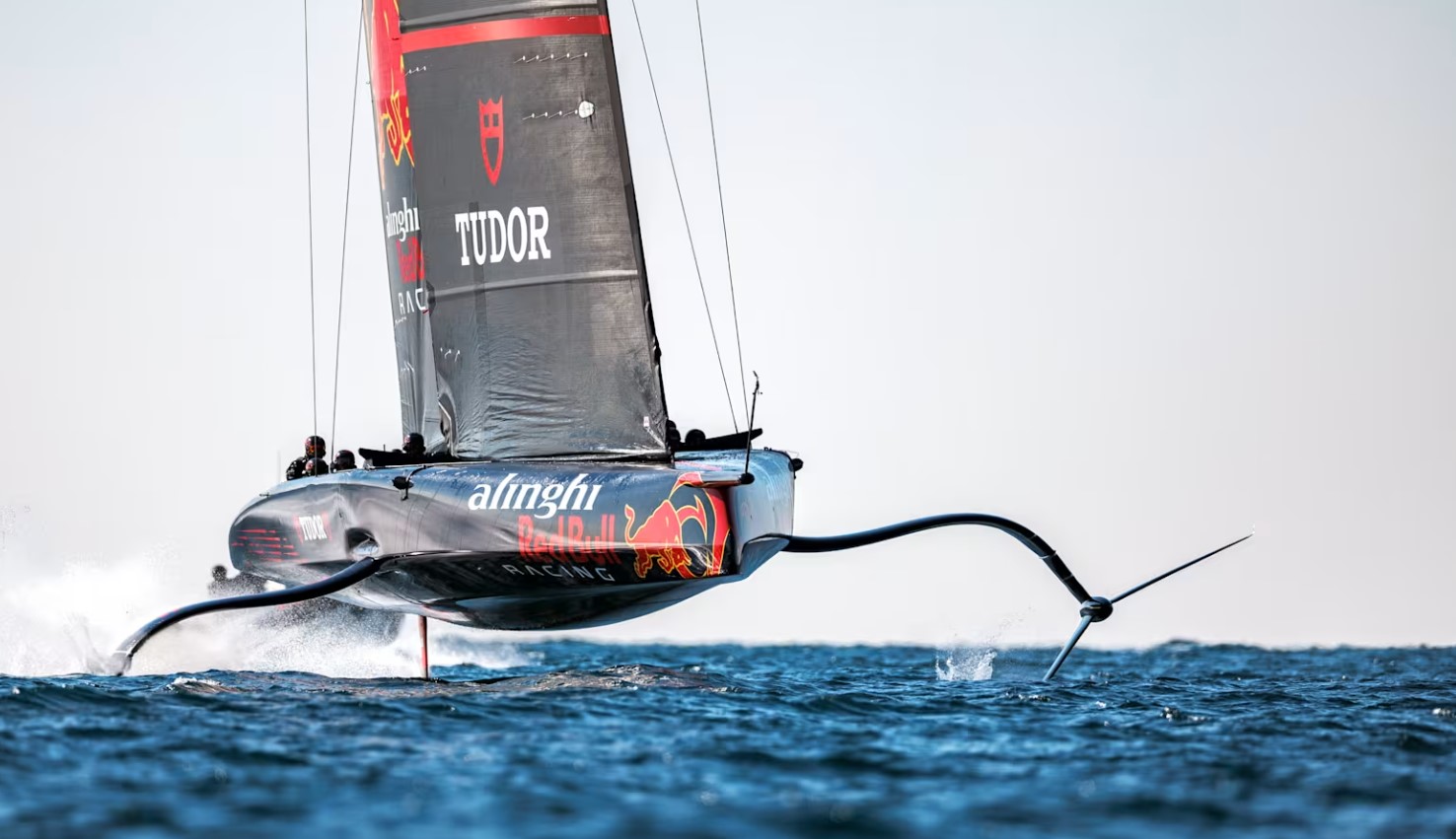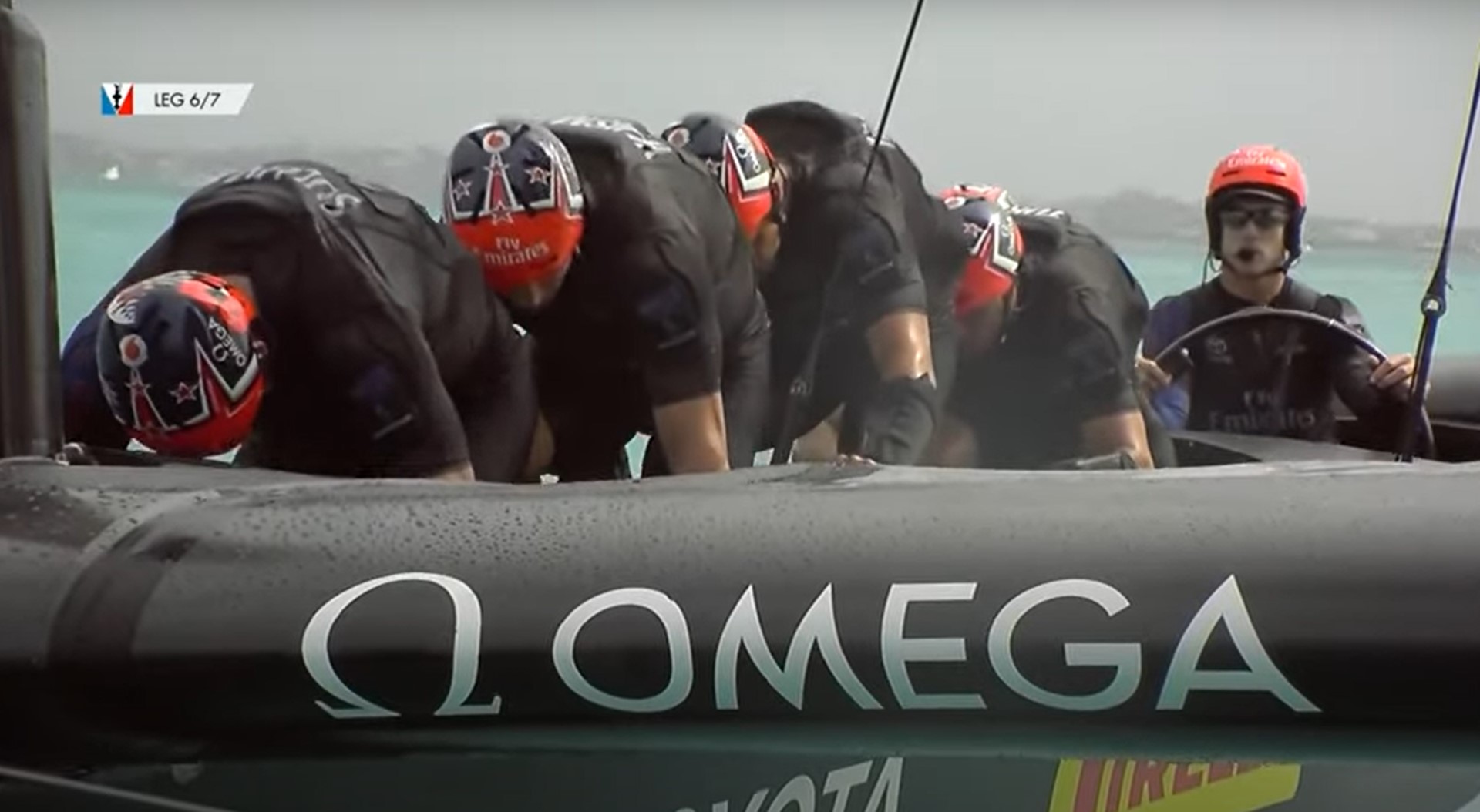The America’s Cup is the oldest sports trophy still awarded today. Hardly any other competition combines so much high-tech with anachronisms. The venue, the race format and not least the yachts change diametrically from event to event.
Each event is preceded by 24 years of a veritable arms race (technology development battle). Each crew has official technology spies in its ranks and there are even rules in the Cup for copying original new sailing innovations.
2024 will be the 37th America’s Cup. The renewed use of hydrofoil sailing yachts is particularly special. Similar to a hydrofoil, foils can be trimmed hydraulically, which lift the entire bow out of the water from a minimum speed and thus allow speeds of up to 80 km/h. At these speeds, very high forces act on the 25-meter-long boat and the enormous sails (the main sail measures approx. 145 square meters).
The trimming of the sails and foils is not driven electronically, but by 4 so-called cyclors. Stationary bicycles are installed on board, which are coupled to the hydraulic accumulator (a gas/oil tank that can absorb/store pressure). There, the work of the cyclors is converted into mechanical-hydraulic lifting work. The faster and greater the movement of the sails and foils, the greater the power output of the 4 pedals must be.

Track athletes and rowers are ideal types for this position. They can provide the necessary power, the high lactate tolerance that this entails and the necessary body weight. In order to prove itself as a cyclor, Athletes should be able to produce 1100 watts over 30 seconds, over 4 minutes it is still a strong 550 to 600 watts and over 20 minutes 450 wattsso we are talking about 512 W/kg body weight herethat’s the equivalent of a good U23/Pro-Conti rider crammed into a carbon hull in sometimes stormy waters.
Crews have already spent several months in their own training bases preparing for the actual competition in fall 24. In addition to training on the water, the Cyclors daily training routine includes many hours in the weight room and on the Wattbike.
In addition to a high calorie intake, a lot of protein, creatine and lactate-buffering substances are consumed. As in so many sports, the combination of pioneering technology (boat building), masterful tactics and the experience of top sailors in dealing with the external conditions and astounding physical and mental performance is a fascinating thing that, when viewed from the outside, does not even begin to reveal how many hours of sweat and brainpower are required.





